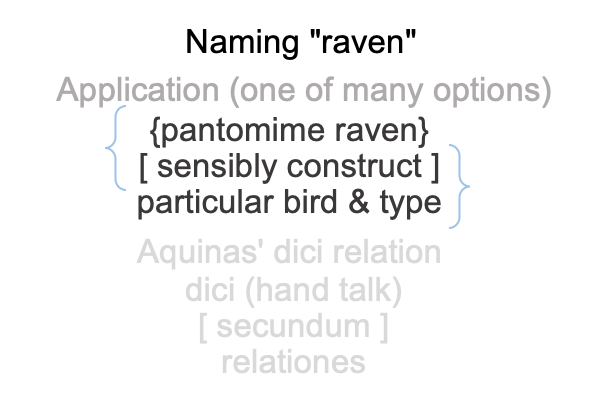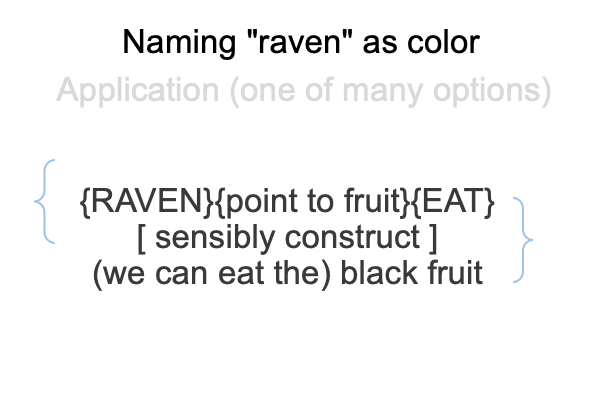0013 What is “dici”?
0014 Most translate the word into English as “speech”.
What happens when I consider the English word, “talk”.
0015 For the Lebenswelt that we evolved in, hominins walk with their feet and talk with their hands. The initial motivation is obligate collaborative foraging in mixed forest and savannah ecologies, during the late Pliocene and the Pleistocene.
Hominins forage in teams, as evidenced by Oldowan stone tools. Oldowan stone tools are hastily constructed, on the spot, during a scavenging team-situation. One rock is struck against another is such a fashion that the target rock fractures, creating a “referent”, a sharp edge, that indicates what is is capable of doing. It is capable of acting like giant tooth.

To me, the Oldowan stone tool represents the occasion of a relationes secundum esse (a relation according to esse_ce). There is a sharp edge hidden within the target rock. A few well-placed blows from another rock reveals that edge. The edge is its essence. The edge is what the original target rock refers to, if that stone could talk.
0016 Hand talk within team activities evolves along the same lines. Every team has needs for members to indicate what they intend to do. Such indication requires reference.
At first, manual-brachial gestures pantomime or point to their referents. Then, each particular pantomime and pointing gets routinized into a gesture word, distinct from other gesture words. So, hand-talk in teams becomes sort of (or proto) linguistic. The key? The referent precedes the gesture-word and is imaged or indicated by the gesture-word. Plus, the gesture-word is used sensibly and avoids confusion.
0017 For example, the raven may be pantomimed in a way that distinguishes it from other birds (such as sparrow or vulture).

0018 Now, this looks like a relationes secundum dici that is very close to a relationes secundum esse. So, maybe I should call it relationes secundum dici (hand talk). Since hand talk images and indicates its referents, and since the referent precedes the gestural-word, dici (hand talk) is just about the same as esse.
0019 What about this “proto-linguistic” business?
Well, the hand-talk word, [RAVEN], can be used in a statement about a raven or ravens in the course of a team activity. Here, the term serves as a noun.
The same hand-talk word may be used in a way that stretches sensible construction (until it becomes a habit within the team’s repertoire). That is to use [RAVEN] as an adjective to indicate a color.
For example, black fruits from a particular plant are ripe and ready for a team to harvest. So, the elder of the team hand-talks the following.

0020 Surely, hand-talk naming of [RAVEN], plus its use as color, associate to relationes secundum esse, but technically belong to relationes secundum dici (hand talk).
Compared to Aristotle’s hylomorphe, both esse and dici (hand talk) occupy the slot for matter and relationes go into the slot for form. The contiguity is [secundum].
Perhaps, this business about hand talk is a surprising development for philosophers engaged in the application of the philosophy of Thomas Aquinas to various questions.
Thus begins the added layer.
